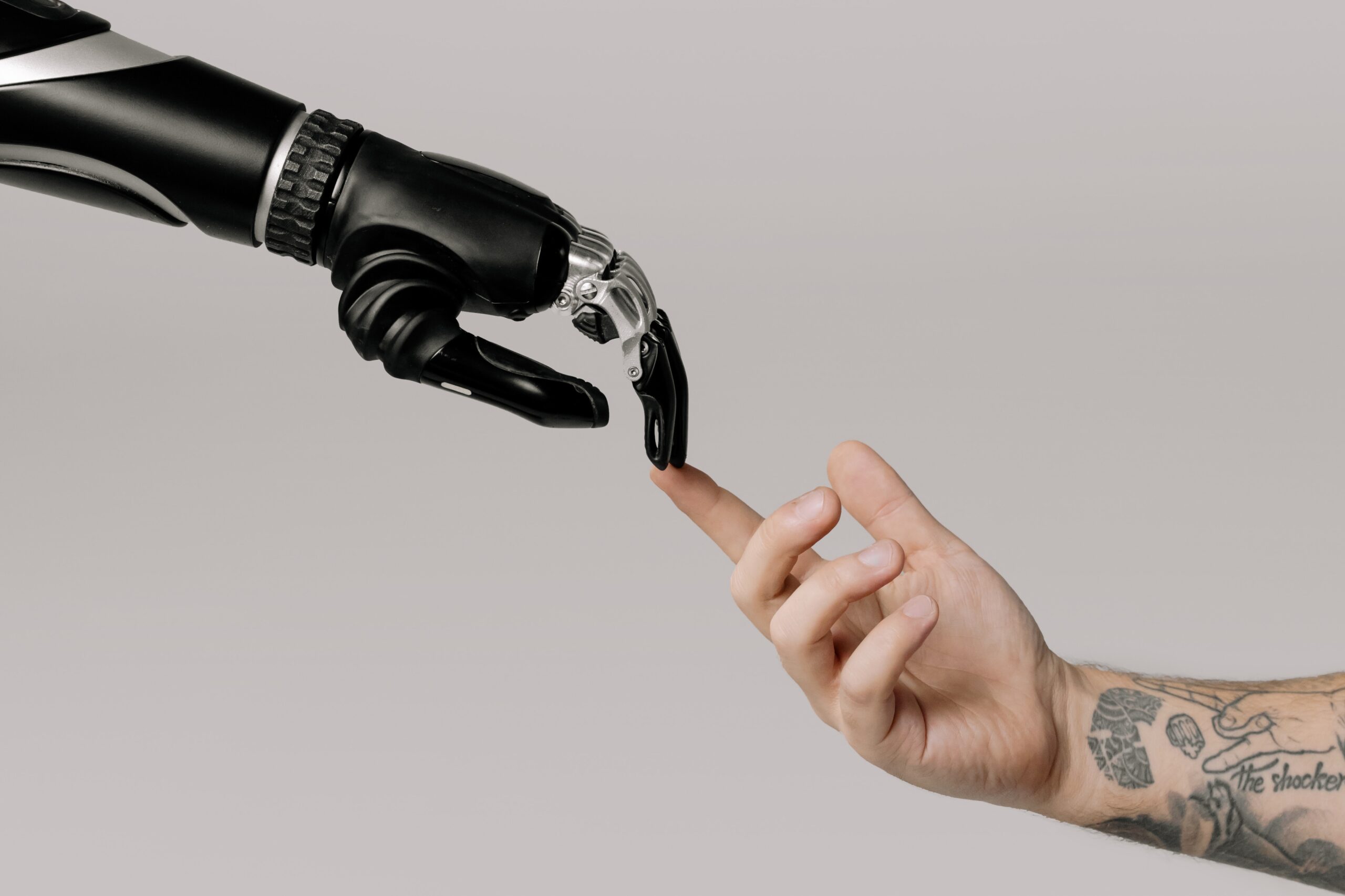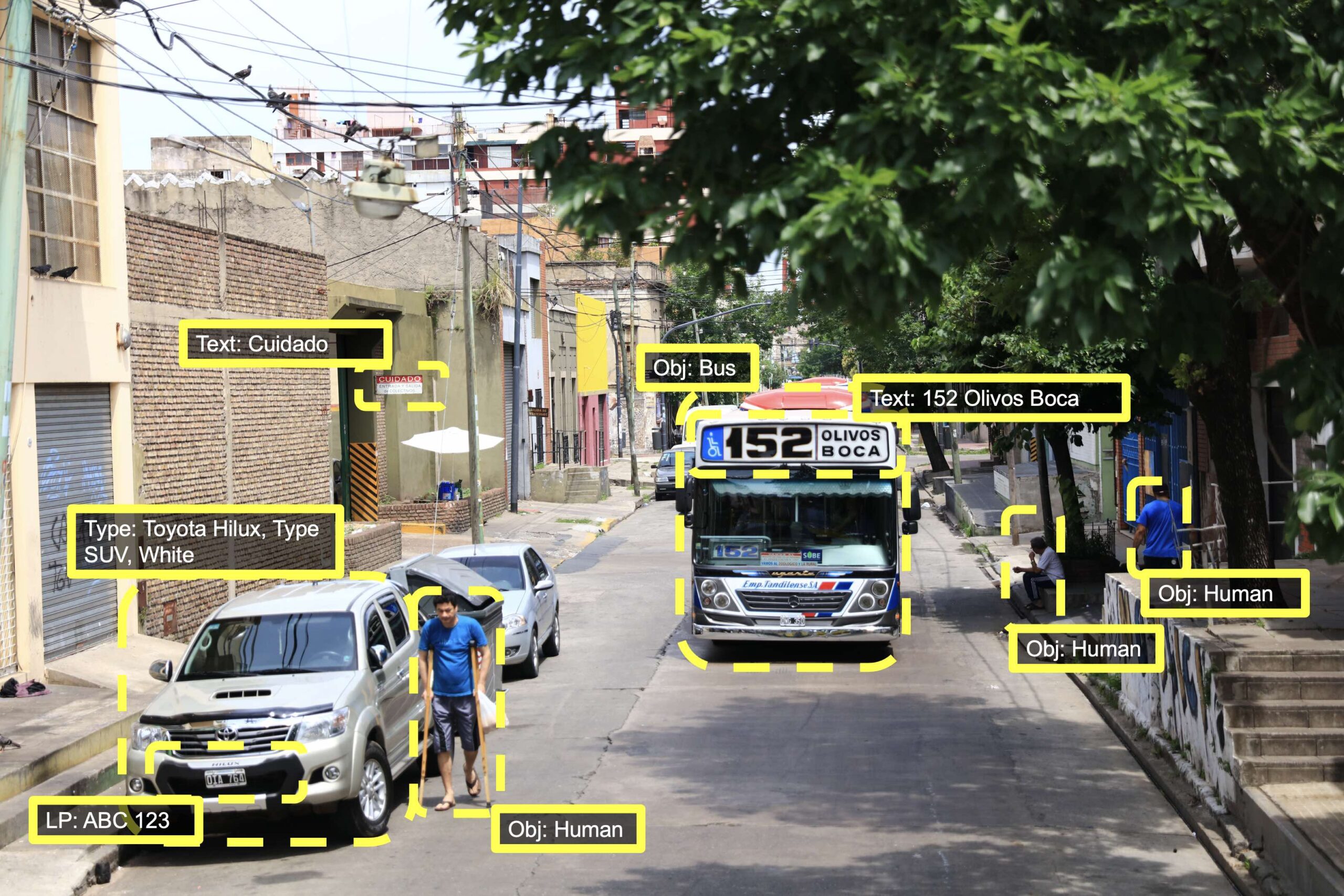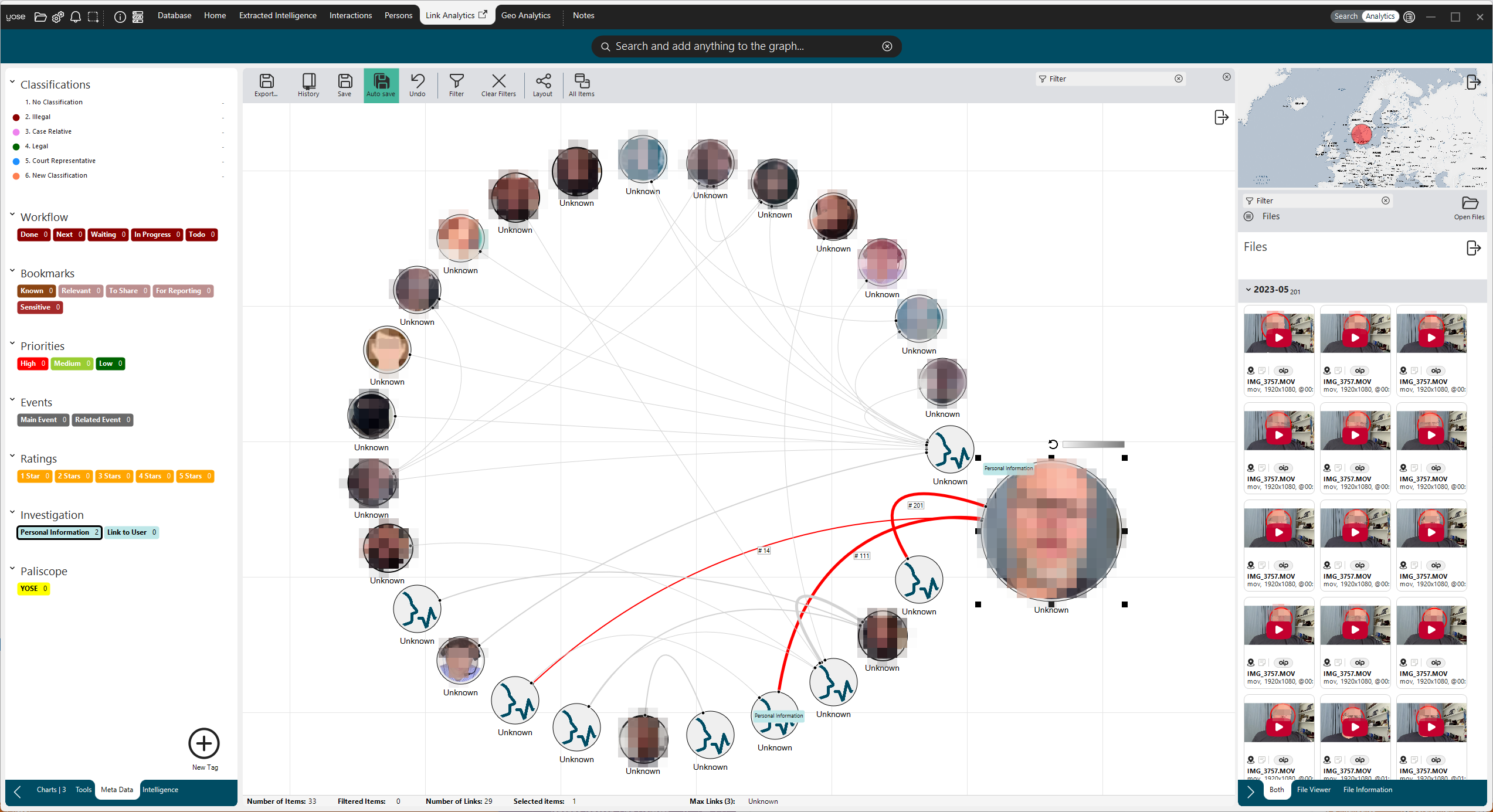
Benefits of AI integration
Increased efficiency
AI can process and analyze vast amounts of data much faster than humans; understanding and overviewing information that might easily be spotted for a human in a single datapoint, but hard and tedious for vast datasets. Saving you significant time and resources not having to go through all the material manually.
Repetitive tasks like pattern recognition, transcription and detecting relevant objects can be automated, allowing you to focus on more complex and creative aspects of your work.
Examples of AI components that reduce repetitive tasks:
- Natural Language Processing (NLP): categorizes large volumes of textual data, such as emails, chat logs, and social media posts, extracting relevant information, identifying sentiments, and uncovering hidden clues in textual data.
- Object Detection, Optical Character Recognition (OCR) and License Plate Recognition : analyzes images and videos to identify objects, people, license plates, text on images or locations. This is particularly valuable in fields like missing persons cases, or going through content with criminal activity (see figure 1 for an image recognition example).
- Speech-to-Text and Voice Recognition: transcribes and analyzes audio recordings, making it easier to review interviews, phone calls, and other voice data. It can also help identify specific speakers and extract relevant information.

Figure 1: License Plate Recognition and car brand identification, allows for effective query of occurrences of vehicles across the image data. Note also that general Object Detection has found a human and that general OCR (image-to-text) extracts the text on the top of the buss. Extraction and identification of text in images and videos can many times serve to geolocate the origin of imagery (even if EXIF data is not available), through street signs, billboards, bus lines, or the occurrence of country specific brands.
Uncover hidden insights
AI excels at spotting patterns and anomalies in data, helping you identify trends and correlations across scattered sources that can be close to impossible to detect on your own.
Even anticipating future events through predictive analysis, such as geographical movements, pattern of life and possible hotspots of criminal activities (read more about Risk Terrain Modelling here).
Make better informed decisions
AI’s precision can reduce the risk of human error in data analysis and thus reduce the chances of missing important information or correlations to inform your decisions. By providing data-driven recommendations, the decision-making processes can become both faster and more accurate.
Not only does AI improve data analysis, but also organization-wide performance; acting as a skill-leveller that increases the abilities of those who are less advanced, and makes experts more efficient. By using AI solutions like translation, Speech-to-Text and NLP, the user is now able to understand and analyze data in languages they don’t themselves master.
Increased consistency
AI performs tasks consistently, ensuring uniformity in data analysis without interference of human bias. It has the endurance to go through all your data and , unlike humans, without getting bored or blindsided over time.
Risks and challenges

Lack of transparency
Many AI models operate as black boxes, offering little insight into their decision-making process. Think of solutions like ChatGPT; you ask a question, and the technology gives you an answer (or even more risky: initiates an action), possibly acting like a big red button that could just “find the criminal”.
This lack of clarity however poses a threat to the evidential and forensic process, in addition to potentially giving you the incorrect answer or action.
Data privacy concerns
AI models are often trained on the data they are given to improve their accuracy. However, for investigators and analysts dealing with highly sensitive data and having to adhere to legal regulations on how that data is managed, this a no-go and possibly dangerous since information is being spread outside their premise.
Overreliance on AI
Even if accuracy is higher on an overall level, blindly trusting AI to make the right decisions without fact-checking and understanding the process behind can have devastating consequences. AI will make mistakes and cannot be 100% trusted.
Biased outcomes
Since AI models are trained on a limited set of data, they tend to lack the diversity needed to supply results with correct representation. As an example, text models trained only on western media will likely produce bias or prejudice correlations between some countries and catastrophes, since those countries are mainly reported on when catastrophes happen.
Strategies for secure and effective AI utilization
Suggestions over answers
Instead of overwriting the investigator’s and analyst’s own craft, use AI tools that provide suggestions. This enables you to quickly spot interesting information but still draw your own conclusions, and furthermore correct or completely discard the suggestions if they are not relevant.
Embrace transparency
Select AI tools that offer transparency and explainability, that clearly shows you how the AI arrives at its conclusions to ensure a traceable process. Note that it is not necessary for the user to understand the inner workings of how or why the AI found a person or an object (because that is typically a black box AI component), but the user needs to be able to inspect the output from e.g. each detector. For example; showing the extracted entities and objects in text and images, respectively, and showing the occurrences of single, and co-occurrences of multiple, objects and persons in e.g. video frames.
Modular AI components
By using modular approach to AI implementation; one component that extracts objects and faces from images and video; another for extracting text from speech in audio and video etc., each AI component excels at specific tasks over a human. This creates a system designed to facilitate data understanding rather than just producing results.
Prioritize data privacy
Keep sensitive data secure and avoid sharing it with external actors by utilizing on-premise AI models. In addition, using models that run offline and are trained separate from the software safeguards the integrity of the data even more.
Learning-by-using
Regularly incorporate AI into your work tasks to understand where it excels and where it falls short. Hands-on experience is the key to navigating the intricate landscape of AI effectively.
Paliscope’s approach to AI
Collaboration between artificial and human intelligence
By embracing secure strategies and finding the right balance between human and AI contributions, intelligence organizations can harness the real potential of AI. At Paliscope, we incorporate AI components in our software for many different tasks, all deployed on-premise, offline and in a modular approach to support the user.
We utilize AI solutions to both process and analyze the data you import. Including; detecting objects, faces, voices, scenes, text in images, license plates, as well as automatically transcribing speech from audio and video (see figure 2).

Figure 2: Speech–to-Text transcribes spoken text into written text. This is truly a game changer for sifting through large datasets of audio and video. Not only does this enables search for spoken phrases in audio and video, exactly as one can do for written text, but it also enables translation of spoken text into a language that the analyst master.
These capabilities enable analyst’s and investigator’s to navigate large volumes of media content, locate specific objects or keywords, track user interactions, find links between visual or textual entities, visualize co-occurrences (see example in figure 3) and determine the origins of photographs within unstructured data repositories.

Figure 3: Face detection and recognition in YOSE enables a way to effectively find and identify persons in images and videos. In the next step, the connecting the dots step, this allows for investigating co-occurrences of persons in videos or images, which indicate various types of relationships between persons. The analyst is always in the driver’s seat; our software just finds the faces and recognizes the occurrence of the same faces across the entire image dataset, but it does not know the name of a person. That is left to the user’s knowledge.
Empowering the investigator and analyst
Our goal is to empower analysts and investigators by making data visualization and analytical processes more accessible.
In essence, our AI strategy is about making AI work hand-in-hand with human expertise, allowing them to handle more data and complexity in a secure manner, ultimately leading to more successful cases.
What we refrain from
We do not conduct online searches, nor do we upload any data or information to the cloud. Our software operates within a robust firewall, meticulously developed for use in investigations and intelligence operations, where access to the data is severely restricted.
Your data is sacred; we never access or derive any information, insights or performance measures from it, ensuring the utmost confidentiality and security.
About Mats
Mats Kvarnström, Head of AI at Paliscope, overseeing the mathematical and analytical components in the Paliscope product platform. Mats holds a PhD in Mathematical Statistics from Chalmers University and has worked within the field of applied mathematics and machine learning all his professional life, in multiple industries.


